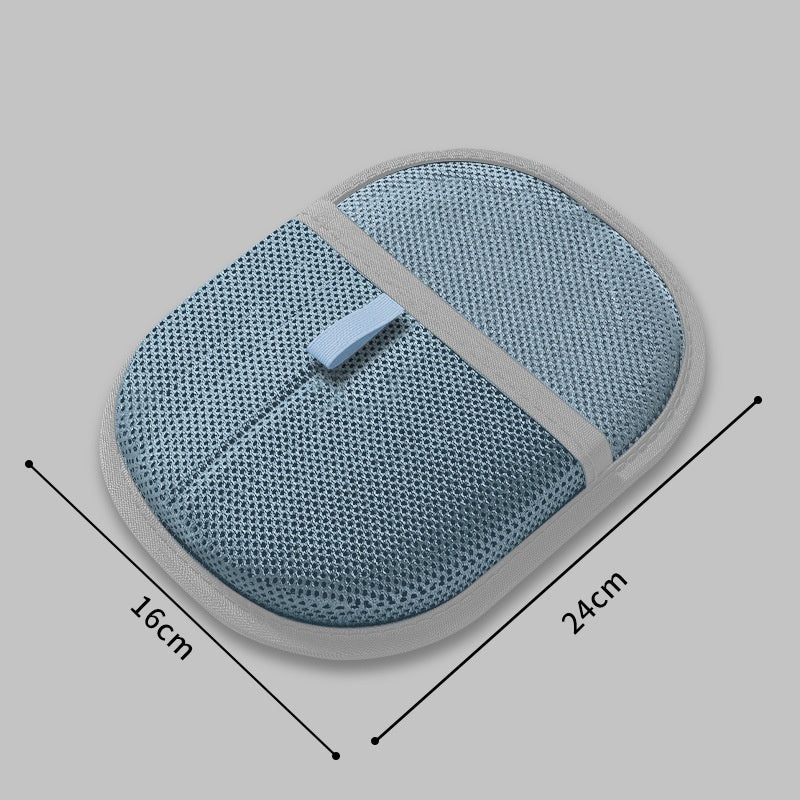Training your cat isn't just about teaching them to sit or fetch. It's about building trust, improving communication, and enriching their mental stimulation.
Contrary to popular belief, our feline companions are remarkably intelligent and capable learners who thrive on mental challenges and structured interaction.
While cats have a reputation for being independent, they are highly trainable, especially when motivated by treats, praise, or play. In fact, many behavioural problems can be resolved through proper training techniques, making life more harmonious for both you and your cat.
Whether you're a first-time cat owner or looking to expand your feline's skill set, this comprehensive guide will walk you through everything you need to know about successful cat training.
The Complete Guide to Cat Training: Building Bonds Through Positive Learning
Training your cat isn't just about teaching them to sit or fetch; it's about building trust, improving communication, and enriching their mental stimulation. Contrary to popular belief, our feline companions are remarkably intelligent and capable learners who thrive on mental challenges and structured interaction.Why Train Your Cat?
Training provides numerous benefits that extend far beyond simple obedience. It offers essential mental and physical stimulation, strengthens the bond between you and your cat, and helps address behavioural issues before they become problematic habits. According to Animal Medicines Australia, training can also reduce stress and improve overall well-being by giving cats a sense of purpose and achievement.Key Benefits Include:
- Mental Enrichment: Cats are intelligent creatures that need mental challenges to prevent boredom and destructive behaviour
- Stress Reduction: Training sessions provide routine and predictability, which cats find comforting
- Improved Communication: You'll better understand your cat's body language and vocalisations
- Behavioural Problem Solving: Address issues like scratching furniture, jumping on counters, or excessive meowing
- Enhanced Safety: Teaching commands like "come" and "stay" can keep your cat safe in various situations
- Veterinary Cooperation: A well-trained cat is easier to handle during vet visits and grooming sessions
Understanding Your Cat's Learning Style
Before diving into training techniques, it's crucial to understand how cats learn differently from dogs. Cats are motivated by what benefits them directly, making positive reinforcement the most effective approach. They also have shorter attention spans and prefer learning in familiar, comfortable environments.Cat Learning Characteristics:
- Individual Motivation: Each cat responds to different rewards (food, play, attention)
- Territory-Based Learning: Cats learn best in their own space
- Timing Sensitivity: Immediate rewards work best
- Independence Factor: Cats need to feel they're making choices rather than being forced
Essential Training Tools
- High-Value Treats - Small, irresistible treats like freeze-dried chicken, fish, or commercial training treats. Use only a few calories worth per session to avoid overfeeding. Consider your cat's dietary restrictions and preferences when selecting treats.
- Clicker - A small device that makes a consistent clicking sound to mark good behaviour instantly. The clicker creates a clear communication bridge between you and your cat, making training more precise and effective.
- Interactive Toys - Feather wands, laser pointers, puzzle toys, or anything that motivates your specific cat. These serve as both training tools and rewards, keeping sessions engaging and fun.
- Leash and Harness - Essential for outdoor training or controlled indoor activities. Choose a well-fitting harness designed specifically for cats, as collar-based leads can be dangerous.
- Target Stick - A telescoping pointer or even a wooden spoon can serve as a target for teaching various commands and tricks.
-
Comfortable Training Space - Designate a quiet, familiar area free from distractions where your cat feels secure and can focus on learning.
Basic Commands Every Cat Should Know
Start with these fundamental commands that form the foundation for more advanced training.- Name Recognition: Before teaching any commands, ensure your cat consistently responds to their name. Practice saying their name in a happy, upbeat tone and reward them with treats when they look at you or approach.
- Sit: Hold a treat close to your cat's nose, then slowly lift it over their head whilst saying "sit." Most cats will naturally sit to keep their eyes on the treat. The moment their bottom touches the ground, click (if using a clicker) and give the treat with praise.
- Come: Start in a small room. Call your cat's name followed by "come" whilst showing a treat or favourite toy. When they move towards you, immediately reward them. Gradually increase the distance as they master the command.
- Stay: Once your cat has mastered "sit," hold your hand up in a "stop" gesture and say "stay." Take one small step back. If they remain in position for even a few seconds, reward immediately. Gradually increase the duration and distance.
- High Five: With your cat in a sitting position, hold a treat near their paw level and say "high five." When they lift their paw to reach for the treat, gently touch their paw to your hand and reward. This command is particularly charming and impressive to visitors!
- Drop It: This safety command is crucial for preventing your cat from swallowing dangerous items. When your cat has something in their mouth, offer a high-value treat whilst saying "drop it." Once they release the item, immediately reward them. Never try to forcibly remove items from their mouth.
Advanced Training Techniques
Once your cat has mastered basic commands, you can progress to more sophisticated training methods.- Target Training: Teach your cat to touch a specific target (finger, stick, or small object) with their nose or paw. This foundational skill makes teaching new commands much easier. Start by presenting the target near your cat's nose. When they investigate and touch it, immediately click and treat.
- Clicker Training Mastery: Perfect your timing with clicker training. The click should occur the exact moment your cat performs the desired behaviour, followed immediately by a treat. This precision helps your cat understand exactly what behaviour you're rewarding.
- Behaviour Redirection: Instead of focusing on stopping unwanted behaviours, redirect them to acceptable alternatives. If your cat scratches furniture, redirect them to a scratching post and reward them for using it properly.
- Chain Commands: Once individual commands are solid, you can link them together. For example, "sit" followed by "stay," then "come." This advanced technique demonstrates your cat's impressive cognitive abilities.
- Environmental Training: Teach your cat to interact appropriately with their environment. This includes using scratching posts, staying off counters, or going to their bed on command.
Training Schedule and Session Structure
- Duration: 5-10 minutes maximum to maintain focus
- Frequency: 2-3 short sessions daily work better than one long session
- Timing: Before meal times when your cat is naturally motivated by food rewards
- Environment: Quiet, familiar space with minimal distractions
- Warm-up: Start with a command your cat knows well to build confidence
- New Learning: Introduce or practice the target skill
- Review: Practice previously learned commands
- Cool-down: End with something fun and easy to maintain positive associations
- Troubleshooting Common Training Challenges
- Try different types of rewards (treats, play, attention)
- Ensure training sessions are short enough
- Check that your cat isn't overfed or stressed
- Training before meals often increases motivation
- Remember that cats learn at their own pace
- Break complex commands into smaller steps
- Celebrate small victories
- Some cats are naturally more food or play motivated than others
- Choose a quieter training location
- Remove competing stimuli (other pets, loud noises)
- Keep sessions shorter
- End on a positive note, even if little progress was made
- Ensure all family members use the same commands and techniques
- Practice commands in different locations once mastered in one spot
- Be patient with the generalisation process
Building Long-Term Success
- Consistency is Key: Use the same verbal cues, hand signals, and reward systems every time. Mixed messages confuse cats and slow progress.
- Patience and Positive Attitude: Your emotional state affects your cat's learning. Stay calm, positive, and patient, even when progress seems slow.
- Regular Practice: Like any skill, training requires ongoing practice. Incorporate brief training moments into your daily routine.
- Individual Adaptation: Every cat is unique. Adapt your training methods to suit your cat's personality, age, and physical capabilities.


















































































